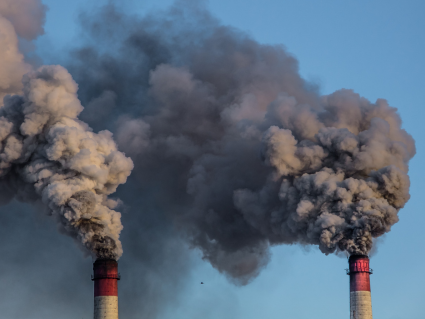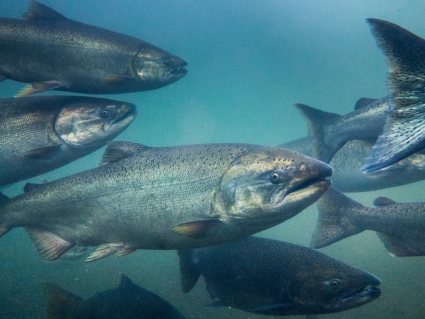The Columbia River carries a heavy burden. Pollution from industry, agriculture, cities, and hundreds of contaminated waste sites threaten the health of the river and the communities that depend on it. One harmful pollutant is a group of chemicals called PAHs (polycyclic aromatic hydrocarbons). Along with other toxic chemicals like PCBs, mercury, DDT, PFAS, and flame retardants, PAHs harm water quality, fish, wildlife, and human health.
Understanding and addressing the Columbia River’s toxic problem is critical to the protection of the river and the millions of people who rely on it.
What are PAHs?
PAHs are widespread in the environment, and some are persistent and bioaccumulative, meaning they stick around for a long time and can build up in the food chain.
How do PAHs enter the Columbia River?
PAHs can be found in soils, sediments, air, water, and in invertebrate species. They can enter the river from oil spills, but many PAHs are released into the air first and then settle on the land or water. When it rains, they wash off into the river through stormwater runoff, which is a major source of pollution. PAHs can also come from creosote-treated materials, like railroad ties, utility poles, and marine pilings, which are used along parts of the Columbia, and can be formed during wildfires.
PAHs are one of the primary contaminants at the superfund site at Bonneville Dam on the Columbia River as well as at the Portland Harbor Superfund Site on the Willamette River which flows to the Columbia. Some parts of the Columbia River are on the EPA’s 303(d) list for PAHs, meaning those sites contain harmful levels of pollution. But just because a site isn’t listed doesn’t mean it’s clean, it could just mean it hasn’t been tested. To explore PAHs in the Columbia River Basin, check out the StoryMap created by the Northwest Power and Conservation Council and Columbia River Toxics Reduction Working Group.

Is anyone monitoring PAHs in the Columbia?
Yes. Columbia Riverkeeper is collaborating with Oregon State University on a study to learn more about toxic chemicals in the river, including PAHs. This project uses passive sampling devices that are placed in the water to collect pollution over time. This research will help to identify what chemicals are present, how much there is, how they move, and how toxic they are.
Columbia Riverkeeper is dedicated to better understanding the toxic burden on the Columbia River and turning that knowledge into action to protect the river.
How do PAHs affect people?
People can be exposed to PAHs in many ways: through air, water, soil, dust, and food. The U.S. Environmental Protection Agency classifies some PAHs as probable human carcinogens, while others are less harmful. However, PAHs are almost always found in mixtures and alongside other pollutants.
People can absorb PAHs through their skin, by breathing them in, or by eating and drinking contaminated food and water. PAHs can also form during cooking, especially when using high heat, like grilling, barbecuing, or smoking food. One study by Oregon State University and Confederated Tribes of the Umatilla Indian Reservation found high levels of PAHs in Columbia River Spring Chinook that were prepared with traditional smoking methods. Health risks from long-term exposure to PAHs include:
- Increased cancer risk
- Respiratory diseases
- Weakened immune system
- Reproductive harm
- Kidney and liver damage
- Low birth weight and premature birth
How do PAHs impact fish and wildlife such as salmon?
In the Columbia River, juvenile salmon are exposed to PAHs through their prey and through river water. PAHs accumulate in insects and other invertebrates that salmon eat. While fish, birds, and people can break PAHs down in their bodies, some of the byproducts that result are still toxic. In salmon, exposure to PAHs can:
- Impair growth
- Cause physical or developmental abnormalities
- Reduce disease resistance
- Harm reproduction
Studies on juvenile Chinook salmon in the lower Columbia River have found PAH concentrations in their stomach contents at or above levels associated with these health risks.

Resources:
- Videos on PAH monitoring with passive samplers (English, Spanish, Vietnamese)
- (OSU Superfund video) What are PAHs and why do they matter?
- Oregon State PAH infographic
- Reducing Exposure to PAHs infographic
- Columbia Basin PAH StoryMap
- Estuary Partnership PAH Facts & Figures
- OSU All about PAHs
This publication was developed under Assistance Agreement No. 02J83901-0 awarded by the U.S. Environmental Protection Agency. It has not been formally reviewed by EPA. The views expressed in this document are solely those of Oregon State University and EPA does not endorse any products or commercial services mentioned in this publication.

PAHs en el Río Columbia
El río Columbia lleva carga pesada. La contaminación proveniente de la industria, la agricultura, las ciudades y cientos de vertederos contaminados amenaza la salud del río y de las comunidades que dependen de él.
